Recommendations of experienced gardeners: how to grow beans correctly
Beans is a permanent "resident" of gardens and orchards. As soon as the housewives do not use it: they make salads for the winter, canned it with other vegetables, prepare preparations for soups, fry, steam, add to ordinary snacks and roasts. Therefore, novice gardeners very often ask "How to grow beans?" After all, it occupies one of the first positions in the list of food products necessary for our life.
You need to grow beans. It is very healthy and delicious. Moreover, it can be used to combine harvesting with garden decoration. There are curly varieties that look beautiful on fences, trellises and other supports. So, you will grow a bountiful harvest and brighten up the look of your garden. In this quick gardening guide, you will learn how to grow beans, how to care for them, and how to harvest them. Information about the species and varieties will help you make the right choice and plant exactly what you need.
Content
- Choosing the best varieties for growing
- Preparing the soil for planting
- Planting beans
- Caring for beans from the moment of planting
- Diseases and pests: control and prevention
- Harvesting the harvest
Choosing the best varieties for growing
Before planting beans, it is necessary to figure out what it is and how it is customary to classify it. Understand what you need it for, for harvesting or for fresh consumption, for garden decoration or for harvesting a bountiful harvest. Depending on the purpose, you can already determine the variety and type of beans. There are several types of plants:
- Shelling beans - this type of beans is used for harvesting a large and bountiful harvest. It is distinguished by the presence of a parchment layer on the sash. The crop is harvested before the first frost.
- Asparagus (sugar) - this type of beans is consumed unripe, it does not contain a leaf with a parchment layer, the shoulder blades are very tender and juicy.
- Semi-sugar - the pods of this type of beans are very dense and tasty. Does not contain parchment-coated sashes.
As a rule, in the orchards and vegetable gardens of Russia, you can find shelling types of beans. They are grown for the purpose of harvesting for the winter. Many people also breed asparagus species, but, according to the gardeners themselves, there is no big difference in taste between the peeling and asparagus species. There is another classification - according to the shape of the plant itself:
- Bush beans
- Curly
If your only plans include getting a good harvest in a short time, give preference to the bush type of beans. If you want to combine the beauty of leguminous vines and late harvesting of shoulder blades, plant a climbing type of plant. The length of the vines will reach approximately 5 m in length. When choosing a climbing variety, pay attention to the color of the flowers during the growing season. Bush beans are considered more frost-resistant, unpretentious, the shoulder blades ripen much faster when compared with loach.
The most popular and widely used varieties, hybrids are the following:
- "Amalthea" - a variety intended for bountiful harvest. Great for preserving and preparing winter salads. It is also suitable for fresh consumption. Disease resistant and pests... Early ripe.
- "Allure" is a bush type of beans, asparagus.
- "Generous" is one of the favorite varieties of gardeners. You can grow a bountiful harvest, since the variety belongs to the shelling type of beans.
- "Swallow" - the variety is appreciated for the special taste of the seeds - sweetish. The plant is bushy, unpretentious, disease resistant.
- "Golden nectar" is an early ripe bean variety, curly, asparagus. From this variety you can get abundant harvest.
- "Caramel" - sweet and juicy the seeds... Refers to the sugar plant type.
- "Inga" - peeling type of beans, bush, early maturing, high-yielding.
- "Laura" - asparagus type of plant, bushy, early maturing, yellow shoulder blades, delicate taste of beans. Grown for conservation and culinary use.
- "Dewdrop 9803262" - used for conservation. The variety is grown for harvesting on an industrial scale.
- "Oran" is an early maturing variety, belongs to the shelling type. Gardeners appreciate its taste - delicate and original.
It is these varieties that are very often planted in vegetable gardens. When deciding, always take into account the purpose of the plant and think about why you will grow it. So, there will be no problems when choosing, the gardener will harvest exactly the harvest that he planned. Having decided on the variety, you can start preparing the soil and seeds.
Preparing the soil for planting
For successful cultivation beans you should take care of the soil in advance. In the fall, deep plowing of the site is carried out. It is very important to take into account one point - the previous crops grown on the site should not be legumes. The best option would be the land where they grew potato, pumpkin, tomato and other vegetable crops. On such a site, the beans will feel comfortable and will give a bountiful harvest. For plowing, they bring fertilizers... Usually it is well overripe humus, compost.
Gardeners recommend applying superphosphate and potash fertilizers.
In the spring, the area prepared for the fall must be hardened several times. The depth of the harrow will reach 8 cm. The process is carried out 3 times before sowing the seeds. This procedure, as well as deep autumn plowing, allows to achieve the nitrogen-fixing ability of nodule bacteria. Plowed soil absorbs moisture better and allows air to pass through. Automatic deletion occurs weed.
In the spring, during the cultivation period, ammonium nitrate is added. The ratio is 10 grams per m2. If the land is very heavy and dense, then instead of cultivation, another deep plowing is carried out. As a result, the ground should be light and airy. You should also consider one point - beans do not like acidic soils.
For growing beans, ordinary garden soil mixed with humus is suitable. If the acidity of the soil is very high, add a little lime. On average, the ratio of the component per square meter will be 300g. The heavier the soil, the more lime you need to apply. Having prepared the soil, you can start planting, having prepared the seeds in advance.
Planting beans
Before planting beans in open ground, you should prepare the seeds... Many gardeners recommend soaking the beans in hot water and letting them sit for several hours. This will allow for earlier emergence. If the seeds are not purchased, then they must also be disinfected. Soak the beans in the potassium permanganate solution for several hours. Then rinse and dry them. There is another option for preparing seeds. The beans are placed in wet bags and the sprouts are waiting for pecking. You can plant it even when the surface of the seeds is cracked.
Many people like to grow seedlings beans:
- Seeds are planted in plastic cups a month before planting in the ground.
- The seedling substrate consists of ordinary garden soil mixed with well-rotted humus.
- You can add some sand.
- Planting depth of the bean is 4-5 cm.
Beans are planted in May, early June, depending on the weather. The soil should be warmed up, the temperature will be 10 ° -15 °.The seeds are buried by 4-5 cm.The distance between the bushes of ordinary, non-climbing beans is 15 cm.The gap between the beds will be about 25-35 cm.If it is a climbing and large bush, then the gap between the bushes will be 50 cm.When planting, take into account soil density. The heavier it is, the closer the bob will be to the surface. Planting seeds is best done in the morning or evening, preferably in cloudy weather.
When planting, the soil should be moist, but not soggy.
Watering should be done before the beans are planted, not after. If planting is done in early spring, the soil must be covered with foil in order for it to warm up. After planting the seeds, the beds are also covered for germination.
Caring for beans from the moment of planting
As soon as bean sprouts appear, you need to start looking after it:
- It is very important to loosen the soil around the plant in time. TO root system air must always come in. If a crust forms and the soil becomes heavy, the soil should be loosened immediately.
- Water the beans in moderation - once or twice a week. It is impossible to transfuse the plant, otherwise it will die.
- As you grow, watch out for spoiled shoots, remove them.
- Be sure to weed the beds from weeds.
- A slug appears in a bean overgrown with weeds. He will instantly destroy the plant. Therefore, it is important to keep the beds and row spacings clean.
- During the growing season, ammonium nitrate is introduced into the soil, the ratio is 10 g per m2. Be careful with watering when the beans are being poured. It needs to be reduced or completely eliminated. The ripening period is very gentle, the plant can quickly become sick and be attacked by pests due to waterlogging of the soil.
- If a climbing type of bean is being grown, remember to tie up the vines of the plant. If you do not do this, the beans will lie in a dense carpet on the ground and will not yield a crop. It will mate and rot.
- Loosening of the soil is stopped when the green beans are completely closed. This usually happens at the end of the ripening of the beans. All these simple rules of care will allow you to grow a good and bountiful harvest. beans.
Diseases and pests: control and prevention
With proper care and planting, the risk of disease and pests very small. However, it is necessary to monitor the growth and development of the plant. Beans have quite a few enemies.
Some of the most common and common pests are:
- The bean weevil is a small bug whose larvae infect the shoulder blades and young seeds. When a pest appears, the plant must process insecticides. As a preventive measure, it is necessary to plow the land deeply before planting and harvest on time.
- Melon aphid - appears when a site is overgrown with a weed. It sucks out all the juices from legumes, the plants die very quickly. They are treated with karbofos. As a preventive measure, it is necessary to weed the beds with beans on time. You can plant next to the plant garlic, marigold, mint or basil... In this case, you can forget about aphids and other pests.
Bean diseases often occur when the plant is overflowing or the soil is dry. The most common and worst disease is called white rot. It is easy to identify - the leaves are covered with a whitish bloom, a white mycelium forms between the stems. Mosaic is another scourge of beans. It is recognized by the appearance of spots on the leaves, a mosaic pattern is formed.
The most dangerous thing about these diseases is that they cannot be removed.
The plant is destroyed. Therefore, it is very important to follow the rules of crop rotation and care. As a preventive measure, pickle seeds, plow deeply, destroy weeds, and avoid planting beans next to carrots, parsley, cucumbers and lettuce. Compliance with the rules of care and planting will exclude the appearance of pests and diseases.
Harvesting
Depending on the type of beans, they start harvesting. The asparagus beans are harvested unripe.The shoulder blade should be green and tender. Peeling species are harvested when the blades are fully ripe - a hard and yellowed pod. The collection must be carried out in the morning. Why? This is due to the fact that morning dew wets the tough shoulder blade beans... It will not accidentally open up when collecting, you do not have to collect beans on the ground. The stems are pulled out of the ground and piled up to dry. Then the pods are sorted from the greens.
You can peel the beans manually, or you can speed up this process. Place the shoulder blades on the burlap or any other fabric, then cover it with another piece of burlap. From above, not hard, beat the beans with a stick. This will pull the pod away from the beans. All that remains is to collect the seeds on the cloth. Store beans for future sowing in the cold, so all existing microbes and bacteria on them will be destroyed at low temperatures. Tested by many gardeners.
Growing beans is not difficult.
Correct care, landing, feeding and timely harvest - these are all the basic conditions for the cultivation of this plant. By observing them, the gardener will grow a good and bountiful harvest of delicious beans.
More information can be found in the video.



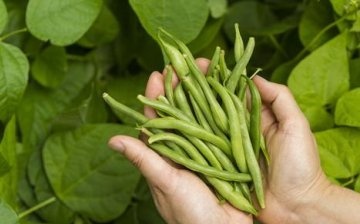
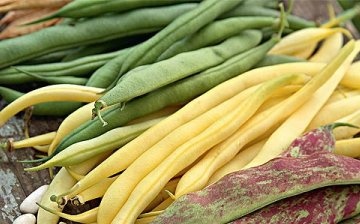
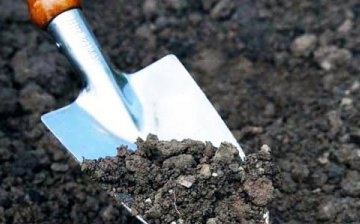
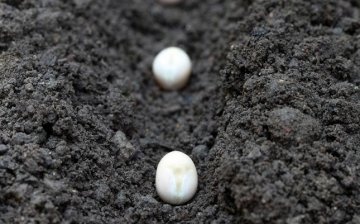
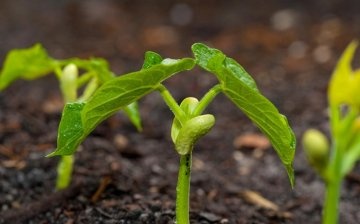
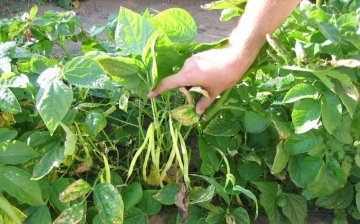
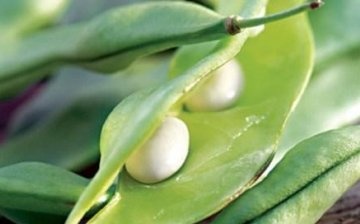







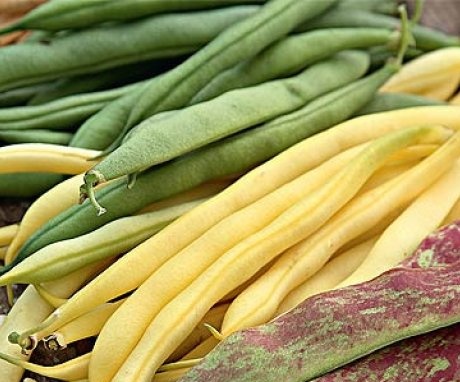


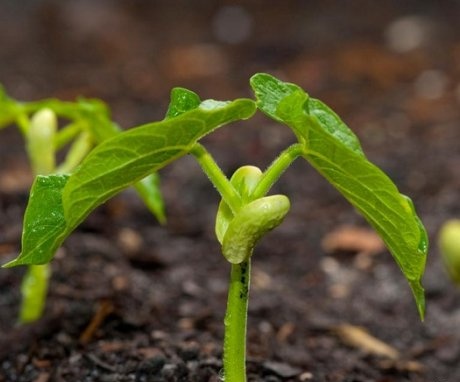

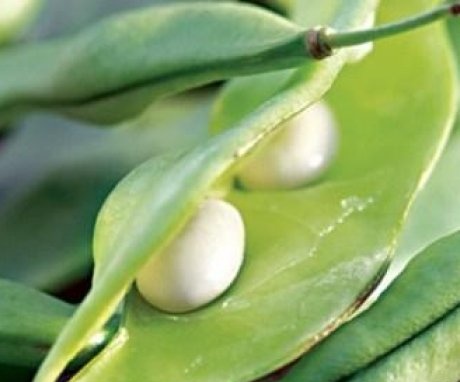
I cannot say that I am seriously engaged in breeding beans. For food, we buy more of it in canned form. And so we sow rather large areas in the spring, but mainly for the sake of improving the soil next year. The harvest is enough to be added to the first courses.